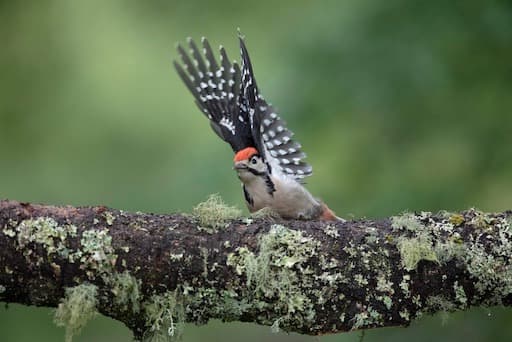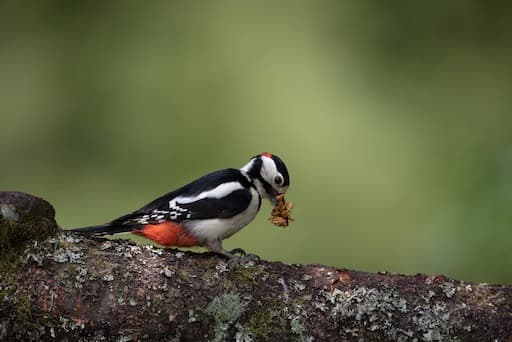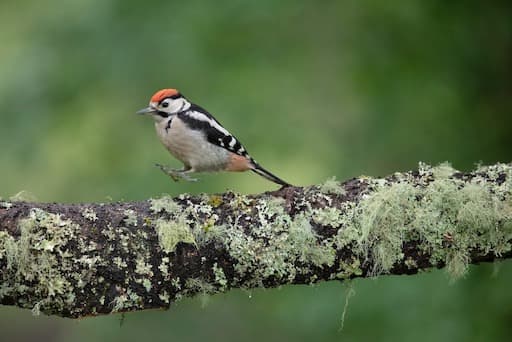What is a Nest?
Most birds lay eggs from early spring until mid-summer, however the exact timing varies depending upon the bird species.
Some birds will even lay multiple sets of eggs, which is why you might continue seeing birds nesting well into summer.
So Jock has identified the six stages during the nesting season that starts in Spring.
Stage 1: Courtship and Pairing
Birds begin to prepare for nesting. The snow has gone and as the temperature gets warmer there is more food available and daylight length is getting longer. Birds begin to break out of their winter flocks and become anchored to a much smaller core territory. This will eventually be their nesting territory. Males will then start singing and chasing other males out of their territory. Songs are being made to attract females, and also protect territory from rivals. Soon the females will begin choosing which partners they want to pair up with.
Look for birds singing, pairing up and protecting territory from other members of their own species. You might also see little gestures of romance like males feeding females.
Stage 2: Nest Building
Soon after the birds have paired up, they will then choose a spot to begin building their nest. Sometimes both the male & female build the nest together and other times it’s just the female. Watch carefully from a good distance birds ( could be both male and female bird or just one of them) carrying little twigs or gathering mud, or simply flying into certain sheltered spots repeatedly. Watch carefully over the coming days and weeks because the birds are now getting very close to mating & egg laying time.
Stage 3: Mating
After the nest is built, this is when mating occurs.
The females need their eggs to be fertilized by their partner before they can be laid in the nest. It’s also a very energy intensive process to lay eggs, so the actual mating and egg laying typically occurs over a period of several days.
Stage 4: Incubation (keeping eggs warm until time of hatching)
Incubation by the parents ( both parents can take it in turns or just the female takes on this role) now sit on the nest keeping the eggs at the right temperature. It is important that we do not disturb birds at this stage
They have to continue feeding themselves and staying nourished, while evading predators. If you notice nest robbers in the area at this time, sometimes the parents will get scared off the nest, or fly out to alarm at some invading crows. If you watch carefully they will return to the nest as soon as possible.
If the eggs get too cold, or a nest robber identifies the nest location, the parents can lose their family and might need to start over again.
Check this web site to learn more about how long do birds sit on eggs: RSPB Incubation
Stage 5: Hatching & Nestlings
With enough patience and a bit of luck, the eggs will hatch and move into their nestling phase.
See this video to watch a how an egg hatches:
The parent birds start flying back and forth to the nest with food for their young. The babies (brood) might beg with a quiet cheep! cheep! cheep! sound whenever the parents approach the nest. This nestling phase will typically last a few weeks, or sometimes longer in large bird species but do not disturb the chicks.
Stage 6: Juvenile Fledglings
After a few weeks, the nestlings are ready to test out their wings. For example:
Young Robins can leave the nest as early as 14 days after hatching. https://gardenbirds.net/robin/
Great spotted woodpeckers chicks are helpless when they hatch; they are naked and their eyes are closed for the first 12 to 13 days. Both parents feed and brood the chicks. The chicks leave the nest at 24 to 31 days old. Chicks leave the nest at 24 to 31 days old.
At this stage they look pretty much like full sized birds, but their flying abilities are not very good, and they’re still completely dependent on their parents. You’ll notice juveniles fluttering their wings and following their exhausted parents around begging for food.
Read how to help a juvenile on the ground at the RSPB web site in their Baby Birds section.
Jock o' Bennachie is fascinated with birds nests and wants to learn more about them... it is amazing to think that some tiny birds can build well weaved nests, just with their beak and legs, and he cannot even make his own bed!



This is part of the Birds In Spring information.